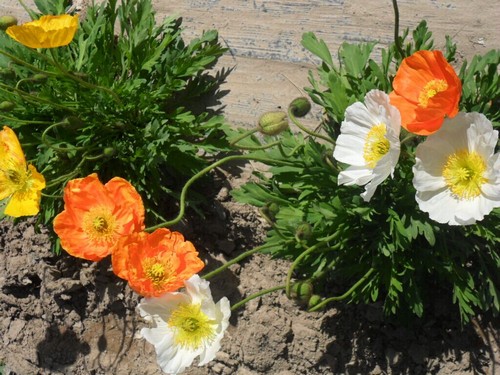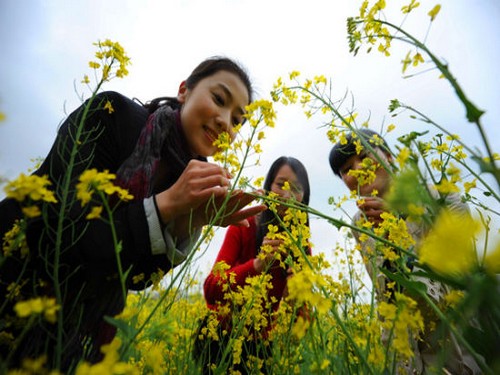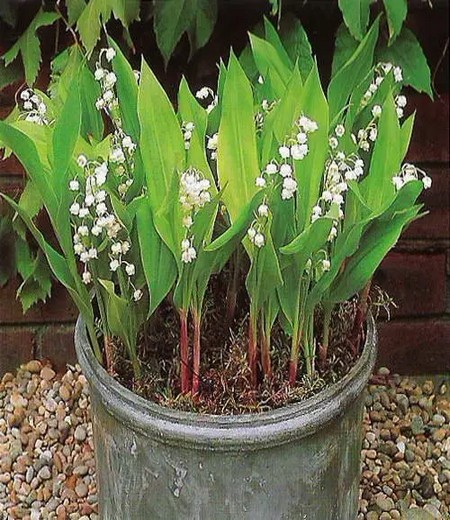How to grow beauty Yu
When is the spring river flower moon, and how much do you know about the past? Xiaolou was windy from the east last night, and the country could not bear to look back on the bright moon. The carved rails and the marble steps must remain unchanged, but not her beauty. How much sorrow do I have? It is like a river of spring water flowing eastward.
I never dared to think that the beauty of Yu who appeared in ancient poetry had been so close to me.
In primary school, the weather was very good, with a real blue sky and white clouds. There are many trees and many flowers. At that time, there was a long yard at home, and a road was paved with green bricks in the middle, and there were always ants in the cracks in the bricks. There is a low wall by the roadside. Several prickly ash trees are planted inside the low wall, and there is a big beehive on the prickly ash tree. Outside the low wall is a small clearing, and some flowers are planted on the ground. At that time, I didn't know what the flower was, but I thought it was as beautiful as a rose.

Later, I saw it by the side of the road in the field, and I looked particularly beautiful in front of wild flowers and weeds, so I moved back home and had no life. I still remember the flowers swaying in the wind by the side of the road. When I came to read a poem a few days ago, I suddenly wanted to know what the beauty of Yu looked like, so I looked it up and memories gushed out. The flower gives me a dreamy feeling.
When the beautiful woman is not in bloom, the egg-shaped bud is covered with two green and white-edged sepals, which are born alone on the slender and erect pedicel, much like a girl who bows her head and ponders.
When Yu Mei's buds bloomed and her sepals fell off, Yu Mei stood out: the bent body stood upright, and the four thin petals on the upward flowers were as thin as silk, smooth as silk, and the light Corolla seemed to be like red cloud pieces of colored silk, although there was no wind, and when the wind moved, she was even more fluttering and eager to fly, the original bent and weak flower branches, at this time also straightened up and propped up the flowers. It is hard to imagine that such a weak and simple Yumei grass could produce such a rich and gorgeous flower.
Yu beauty's posture is lush and beautiful, curling and dancing because of the wind, like a colorful butterfly spreading its wings, which attracts people's reverie. The beauty of Yu is both simple and elegant and rich and gorgeous, and the two are harmoniously United in one. Its appearance has the rich charm of beauties in Chinese classical art, which can be called a wonderful product in flowers and plants.
Yumei belongs to deep-rooted plants and is not tolerant to transplant. Because the root system is easy to be hurt during transplanting, the seedling growth is poor, affecting the normal growth and flowering. If it is necessary to transplant, wait for the seedling to grow to 6 leaves in cloudy days. Water thoroughly before transplanting, bring as much original soil as possible, and damage the roots as little as possible, but it is best to carry out direct seeding cultivation.
Yu Mei likes plenty of sunshine and dry and cool air, has lax requirements on the soil, and grows best in loose, fertile sandy soil. Watering should be controlled during the growth period to ensure that the soil is moist. Quick-acting fertilizer mainly composed of phosphorus and potassium fertilizer can be applied for 2 or 3 times in the bud and flowering stage to promote the bright color of the flower and prolong the flowering period. After the flower fade, the residual flower branches, diseased and weak branches and dead branches should be cut off in time, so that the remaining flowers on the plant can bloom better. The cultivation of Yumei people is the best practice of crop rotation, if the continuous cropping is prone to a variety of diseases.
The planting method of Yu Mei:
1. Sowing and reproduction:
Sowing in the pre-arranged seedling bed from September to October, the optimum temperature for germination is 20 ℃. Because the seeds are very small, the soil of the seedling bed must be fine, do not cover the soil after sowing, keep the grass moist, and uncover the cover after emergence. Yu beauty seeds are easy to scatter, after a year of planting, the environment can no longer sow, in-situ will give birth to countless seedlings.
2. Planting:
After sowing and emergence, if it is not transplanted, the seedlings can be planted between the rows of 20cm × 30cm. The planting time should not be later than 110-120 days before the flowering date. If you want to transplant, it should be carried out on a cloudy day when 3-4 leaves of the seedlings grow. It should be watered thoroughly before transplanting, and the seedlings should be raised with soil so as not to hurt the roots.
3. Lighting:
Like cool, avoid high temperature, warm in winter and cool in summer is the most suitable for its growth, the growth period requires sufficient light, at least 4 hours of direct sunlight every day. If the growth environment is dark, the light is insufficient, the plant growth is thin and the flower color is dim.
4. Temperature:
Yu Mei is cold-resistant and afraid of summer heat, and the suitable growth temperature is 12-20 ℃. With the increase of temperature in summer, the growth of Yumei weakened, the aboveground part withered and died, the low temperature at night was beneficial to the growth and flowering, and grew well in the high altitude mountain area.
5. Watering:
When sowing, it is necessary to apply sufficient base fertilizer, and the soil that likes moist soil during the growing period should be watered at the right time. Watering should grasp the principle of "dry and wet". When planting, watering should be controlled to promote root growth, sufficient water supply after budding, and keep the soil moist.
6. Fertilization:
Rarefied liquid fertilizer should be applied 1-2 times before flowering, and 0.1% potassium dihydrogen phosphate solution should be sprayed on the leaves every 3 days after budding. After blooming, the beauty of Kaiyu cut off the withered flowers in time to make the remaining flowers bloom better.
Time: 2019-05-25 Click:
- Prev

Rape cauliflower planting technique
The origin of cauliflower is in Europe and Central Asia. Botanically it belongs to annual herb, Cruciferae. It is widely cultivated in China, especially in the Yangtze River Basin and other places in the south. Flowers blooming from winter to spring. Similar plants of sorrel. The color is bright and fragrant. Rape has a good ecological effect.
- Next

How to grow lily orchids
The beauty of the valley of the valley is favored by the romantic French by nature. Since the beginning of the 20th century, the beloved lily of the valley has had its own program, and May 1 is the French festival of the lily of the valley. The British are also big fans of the lily of the valley. Lily in the valley is the British common name for the lily of the valley.
Related
- Fuxing push coffee new agricultural production and marketing class: lack of small-scale processing plants
- Jujube rice field leisure farm deep ploughing Yilan for five years to create a space for organic food and play
- Nongyu Farm-A trial of organic papaya for brave women with advanced technology
- Four points for attention in the prevention and control of diseases and insect pests of edible fungi
- How to add nutrient solution to Edible Fungi
- Is there any good way to control edible fungus mites?
- Open Inoculation Technology of Edible Fungi
- Is there any clever way to use fertilizer for edible fungus in winter?
- What agents are used to kill the pathogens of edible fungi in the mushroom shed?
- Rapid drying of Edible Fungi

